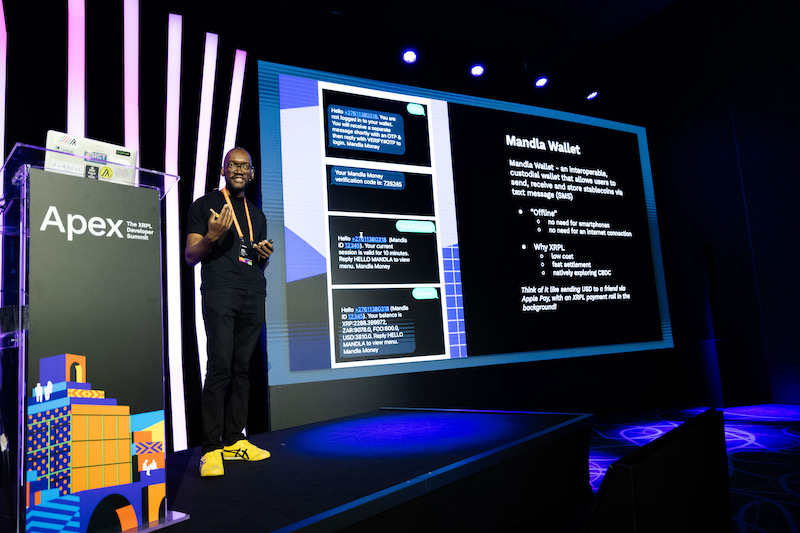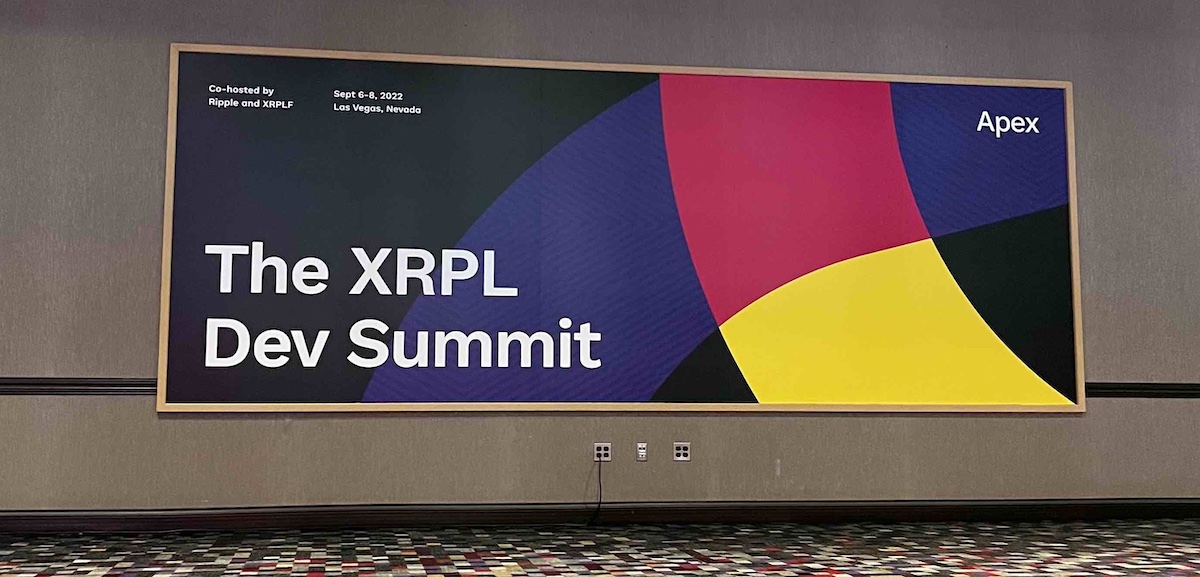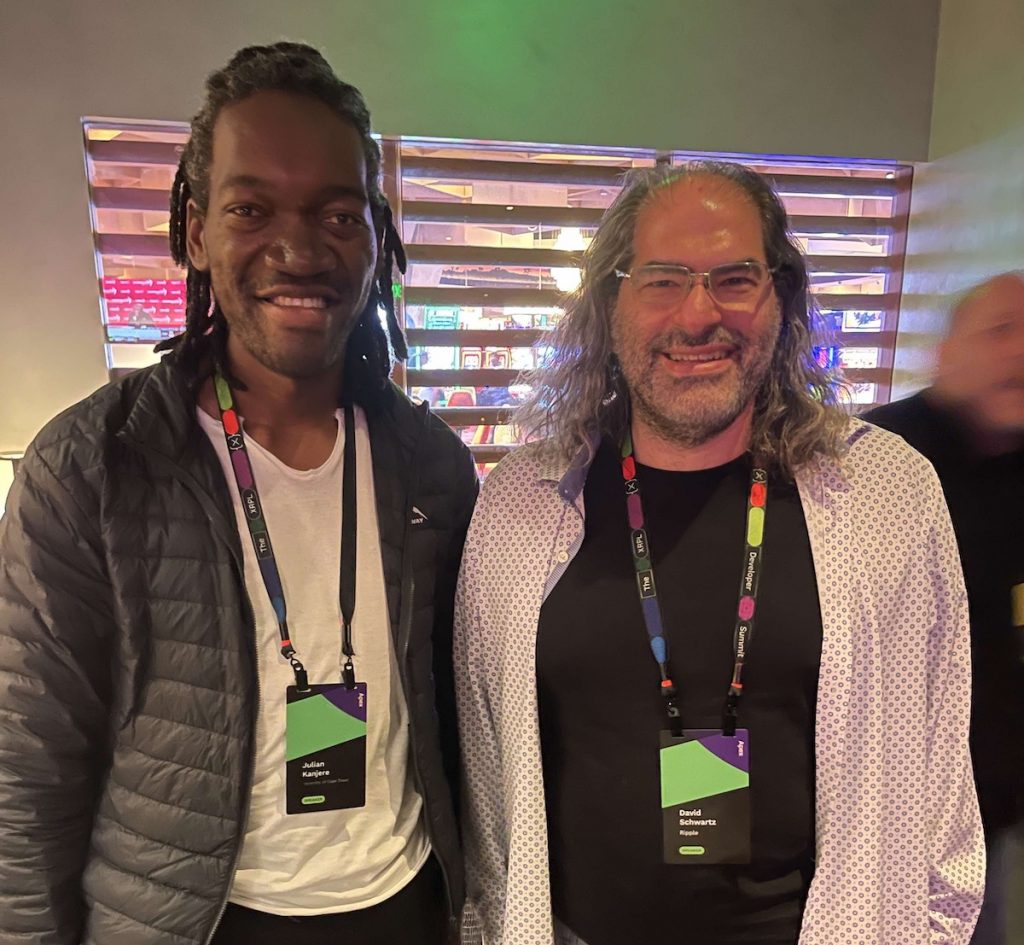The 2023 edition of the annual Apex XRPL Developer Summit hosted by Ripple and the XRPL Foundation took place on 7th & 8th September in Amsterdam. The summit brought together developers, innovators, businesses, and investors for an inspiring two days, to exchange ideas on all things blockchain technology and the XRP Ledger.
Offline Payments, Stablecoins and retail-CBDC
Last year, at Apex 2022, I spoke about how we (Mandla Money) are building low-tech digital asset wallets for financial inclusion and universal access leveraging the XRPL. This year at Apex 2023, I had the opportunity to give a talk on the more practical and operational considerations of administering an offline wallet that supports XRPL native and issued assets, and utilises capabilities of the ledger such as the decentralised exchange (DEX). In my talk, I discussed what desiderata for offline payments (the Mandla Wallet is an SMS wallet and I really should refer to this as semi-offline payments before I upset central bankers and economists), our approach to administering stablecoins (and by extension retail CBDC) in an “offline” setting and setting transaction limits for users based on their know-your-customer (KYC) level. I ended the talk with a demo of the corresponding features, and interoperability between the Mandla Wallet and other wallets in the XRPL ecosystem (I used Xumm wallet to illustrate this).
Here is a video of the talk.
Conference Highlights
The other highlights from the conference included:
- Announcement of upcoming XRPL features:
- Decentralised identity on XRPL (XLS-40d) – native support for world wide web consortium (W3C) decentralised identifiers (DIDs) on XRP Ledger. Decentralised identity (also known as self-sovereign identity) specifies a lifetime portable digital identity that does not depend on any centralised authority and fulfills requirements such as persistence, global resolvability, cryptographic verifiability, and decentralisation. This will allow XRPL account holder to create, and manage their decentralised identifiers while having complete control over the private keys and contents of the identity object.
- Automated market maker (AMM) on XRPL (XLS-30d) – An automated market maker (AMM) is a protocol for a decentralised exchange (DEX) that prices assets through an algorithm, rather than using an order book like a traditional exchange. Currently, the XRPL DEX provides liquidity exclusively by manual market making and order books. Introducing a native AMM will allow users to trade at a certain exchange rate on a DEX without having to find a counterparty e.g. instead of having to find a neighbour who is willing to trade USD for ZAR, or go to the airport currency exchange counter, the AMM allows one to exchange tokens freely.
- A presentation on efforts and initiatives to grow and support the XRPL community including XRPL foundation, XRPL accelerator, XRPL grants and XRPL commons.
- A breakout session on payments in emerging markets (e.g. Brazil).
All in all, I find Apex to be a great opportunity to network with the XRPL community and this year was no different – perhaps a little more special given the tailwind the community is currently riding given the glimpses of regulatory clarity around the XRP asset that is starting to emerge!


